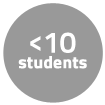Course Overview
This page focuses on the course 5.95J Teaching College-Level Science and Engineering as it was taught by Dr. Janet Rankin in Fall 2012.
This course is a participatory seminar focused on the knowledge and skills necessary for teaching science and engineering in higher education. This course is designed for graduate students interested in an academic career and anyone else interested in teaching. This course is pass/no record.
A subset of this course is covered in the Graduate Student Teaching Certificate Program.
Course Outcomes
Course Goals for Students
- Be familiar with the latest research in STEM (science, technology, engineering, and mathematics) learning in higher education, including research on diversity.
- Have an understanding of how to apply that research in the students' own teaching.
- Improve on teaching skills such as constructing intended learning outcomes, lecturing, using active learning techniques, and employing feedback to improve one's own teaching.
- Have a better appreciation for the skills needed to assess student learning and to address some of the challenges that come with teaching college students.
- Be able to write a teaching philosophy statement.
Possibilities for Further Study/Careers
Careers in academe that require college-level teaching.
Below, Dr. Rankin highlights some aspects of teaching this course.
- This course benefits greatly from the wide range of disciplinary backgrounds and perspective of the participants. The class typically consists of students who have done their undergraduate work in other countries and at other institutions within the US. Each student views the course content and its application through a unique lens. This variety of perspectives creates a dynamic and intellectually rich learning environment.
- Because of the small size of the class, we are often able to tailor the content to mesh with particular interests and concerns of the group. The use of discussion fora, wikis, and blogs has facilitated the sharing of information among participants and has added significantly to the course in recent years.
- The biggest challenge with this course is finding reading material that is appropriate in both amount and level. I have come to accept that I cannot assign all the readings that I would like to, but assume that as mature and committed learners, participants will pick, read, and save articles and resources according to their individual interests.
- I believe it is important to build in a significant amount of active learning exercises (e.g., pair-share, think-write, etc.) into each class.
Curriculum Information
Prerequisites
None
Requirements Satisfied
None
Offered
Every fall semester

Enrollment
Fewer than 10 students took this course in Fall 2012. Enrollment varies from 4-20. About 175 students typically enroll annually in associated certificate programs, which cover a subset of the course material and are not for credit.
Breakdown by Year
Virtually all students in this course are graduate students, with some post-docs, visiting faculty, and advanced undergraduates sometimes enrolling.
Breakdown by Major
Students in this course come from a range of departments, including Chemistry, Mechanical Engineering, Chemical Engineering, Electrical Engineering and Computer Science, Materials Science and Engineering, and others.
Typical Student Background
Students in this course are typically hoping to enter academe and want to learn more about teaching.
Ideal Class Size
The ideal class size for this course is 15-20 students. This is a good number to build a cohort – large enough to enable small group discussions with a variety of perspectives. Grading of weekly written assignments would be more difficult with more students.
During an average week, students were expected to spend 4 hours on the course, roughly divided as follows:
In Class
- Once a week for a two-hour session
- 13 class sessions total
- Mandatory attendance
Class activities
- 10-15 minutes spent answering questions submitted by students at the end of the previous class on index cards called "muddy cards," for what was unclear or "muddy" during the class
- Introduction of the day’s topics and discussion of readings, sometimes supported by PowerPoint slides
- Small group activities in groups of 2-5 students
Out of Class
- Readings every week
- Short post-class assignments every week
- Preparation for a microteaching session, during which each student gives a 6–10 minute presentation to the rest of the class
Semester Breakdown
| WEEK | M | T | W | Th | F |
|---|---|---|---|---|---|
| 1 |  |  |  |  |  |
| 2 |  |  |  |  |  |
| 3 |  |  |  |  |  |
| 4 |  |  |  |  |  |
| 5 |  |  |  |  |  |
| 6 |  |  |  |  |  |
| 7 |  |  |  |  |  |
| 8 |  |  |  |  |  |
| 9 |  |  |  |  |  |
| 10 |  |  |  |  |  |
| 11 |  |  |  |  |  |
| 12 |  |  |  |  |  |
| 13 |  |  |  |  |  |
| 14 |  |  |  |  |  |
| 15 |  |  |  |  |  |
| 16 |  |  |  |  |  |
 No classes throughout MIT
No classes throughout MIT Class session
Class session Assignment due
Assignment due No class session scheduled
No class session scheduled Microteaching
Microteaching

 Room 1 of 1
Room 1 of 1 